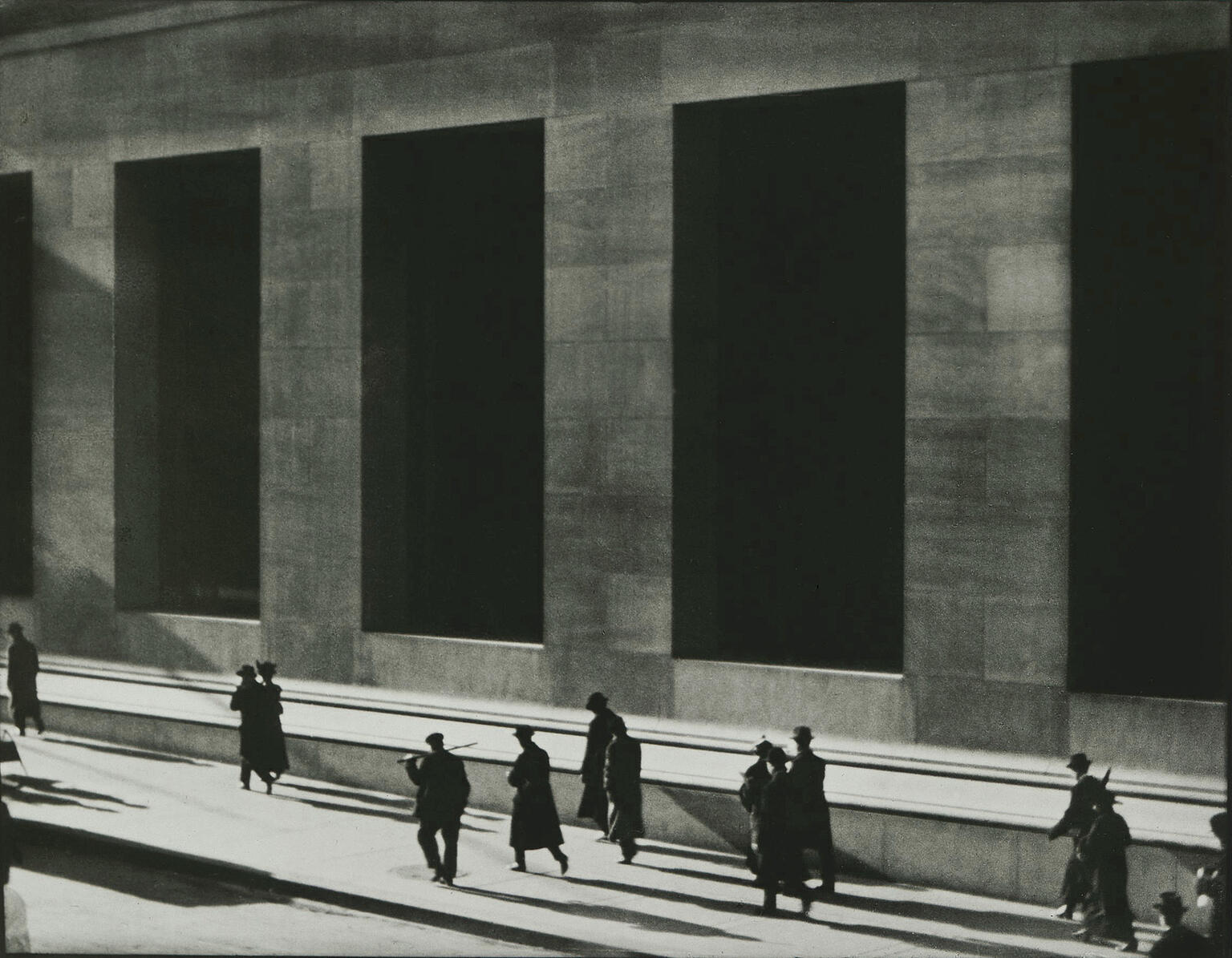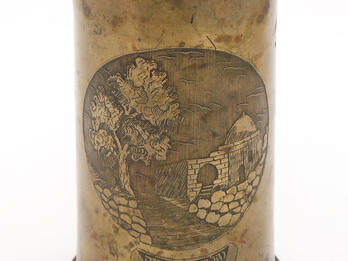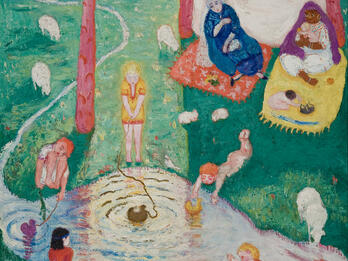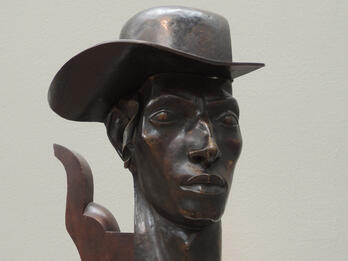Wall Street
Paul Strand
1915

Creator Bio
Paul Strand
Born in New York to immigrants from Germany, Paul Strand was raised on the Upper West Side of Manhattan. He was attracted to photography while studying at the Ethical Culture School under Lewis Hine. After graduation, he participated in Stieglitz’s Camera Club, published in Camera Work, and came to see himself as part of the emergent world of artistic photography. His photographic style characterized humanity in often neglected moments of urban life through street portraits, abstract cityscapes, and movement. Strand also produced films, notably his 1921 adaptation of Walt Whitman’s Mannahatta and his politically charged Frontier Films productions. After World War II he moved to Orgeval, France, and focused exclusively on photography.
Places:
You may also like

Aquarium (Self-Portrait)

A "Taube" Is Spotted; A French 75 Is Immediately Put into Battery While "Pépéte," the Aviator, Prepares to Give Chase

Amazone (bronze)

Ornamental Artillery Shell Casing

Easter Picture


